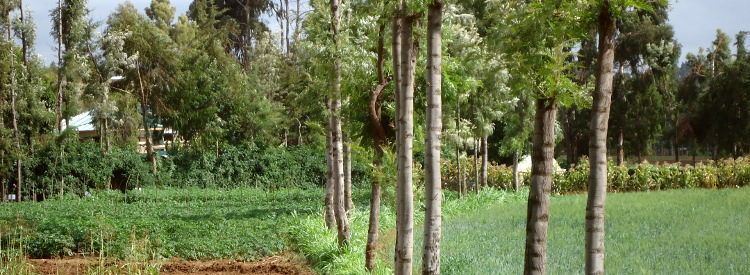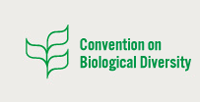
The World Bank BioCarbon Fund
Reducing greenhouse gases is critical to tackling climate change. The World Bank BioCarbon Fund supports sustainable land use, forestry, and conservation programs in developing countries. Among other advantages, these projects may open up new income possibilities for smallholders. The Syngenta Foundation is one of the Fund's investors.
2014 updates:
*Kenyan smallholders earn first carbon credits worldwide under SALM* methodology (World Bank media release).
*World Bank videos featuring *Sustainable Agricultural Land Management show how it can increase crop yields, improve livelihoods and reduce carbon emissions. Here's "Plant Some Pawpaw and Lift a Goat: Surprising Ways to Combat Climate Change in Kenya".
The Kyoto Protocol and the European Union's Emissions Trading Scheme turned greenhouse gas emission reductions (GGER) into international commitments. Reducing emissions at any point on the planet has, essentially, the same overall impact on climate change. Kyoto "Annexe 1" countries, like companies, can purchase GGER generated by projects elsewhere. These offset the buyers' own emissions. When the projects are in developing countries or transition economies, they also contribute to more sustainable development.
One-third of greenhouse gases are estimated to result from changes in land use, notably deforestation. On the other hand, reforestation, land restoration, and land management activities can help significantly to mitigate climate change. They do so by removing carbon from the atmosphere (sequestration) or by preventing further releases from vegetation and soils (conservation). These activities can also create benefits for the local environment and biodiversity, and for the communities involved. "Carbon credits" can create cash incentives for sustainable land management activities, often based on new knowledge and technology.
The BioCarbon Fund
The World Bank BioCarbon Fund (BCF) started in 2004. Its aim was to foster the role of land use projects in the newly emerging "carbon market". BCF targets projects in developing countries that sequester or conserve greenhouse gases in forests and agro-ecosystems to mitigate climate change. BCF works to extend the benefits of the carbon market into rural, less affluent communities. The aim is to derive additional revenues that support sustainable land management.
BCF has two investment tranches. Tranche 2, begun in 2007, has $36.6m. The portfolio includes aforestation and reforestation, reducing emissions from deforestation and forest degradation (REDD) ,and innovative approaches to SALM*. The Syngenta Foundation has pledged to invest $2.5 million by 2017. We are also assessing the impact of modern technologies and practices for SALM. These include no- or low-till agriculture, better nutrient use efficiency, and better seeds for crop rotations. Our aim is to see, for example, how agricultural carbon could generate regular farmer income.
Checking what really happens
To calculate GGER attributable to particular projects, specialists need to develop baseline scenarios. The methodologies are complex, and currently represent a bottleneck in development of the carbon market. Developing the methodologies is particularly difficult for land use projects: one issue, for example, is how long any change in use will last. (Here is how the BCF aims to manage the risks related to "permanence" .) Strict accounting and monitoring are required. Once a methodology has been officially approved, it is in the public domain and available to any project developer. The BCF has already received approval for aforestation and reforestation methodologies, and has submitted others for sustainable agricultural land management and reduced deforestation.
China: land improvement and new income
In July 2013, the World Bank announced progress in China. That month, the "Reforestation on Degraded Lands in Northwest Guangxi" project issued almost 36,000 temporary certified emission reductions. This was the third issuance in BCF Tranche 2 Window 1, after projects in Brazil and Chile.
The Guangxi project is reforesting almost 7000 ha of multiple-purpose forests on degraded lands in the province's northwest. As well as restoring land, this will also help control erosion. Most tree species planted are native to the region. Some of the area is planted with eucalyptus to meet small timber and fuel wood needs.
"By bridging the income gap and mitigating financing risk", writes the World Bank, "carbon finance has helped the project overcome investment barriers, namely the lack of commercial bank loans available for forestry activities in degraded areas."
Hitherto, household income in the project area lagged considerably behind the national average. The BCF project directly involves farmers in reforestation, generating income for them and promoting community development. Earnings come from carbon revenues and the sale of wood, resin and other forest products.




